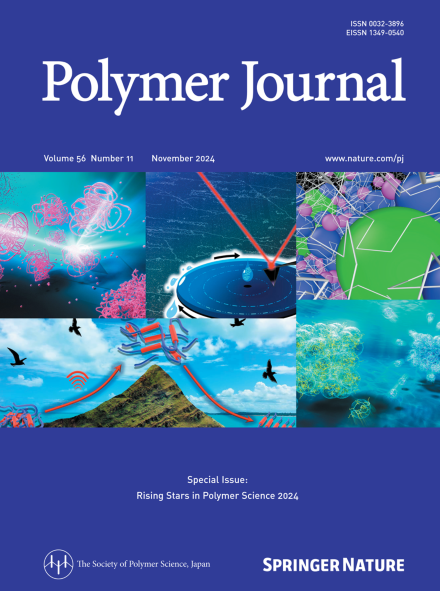Liquid‒liquid phase separation of spider silk proteins
IF 2.7
4区 化学
Q3 POLYMER SCIENCE
引用次数: 0
Abstract
Liquid‒liquid phase separation (LLPS) is a phenomenon relevant in the multicomponent settings of many biological processes, including compartmentation, pathological conditions such as Alzheimer’s disease, and protein assembly. LLPS also plays a key role in spider silk fiber formation. Many spider silk fibers display properties such as elasticity in combination with high mechanical strength, which result in an outstanding toughness exceeding that of steel or Kevlar. A thorough understanding of the natural silk spinning process is thus vital for translation to artificial spinning techniques to achieve biomimetic fibers with properties superior to those of other fibrous materials. This focus review summarizes the milestones of research on spider silk assembly, starting from two initial theories, i.e., the liquid crystal theory and the micelle theory, followed by evidence for the importance of LLPS in this process. Ex vivo studies and experiments utilizing recombinant spider silk proteins have highlighted the importance of LLPS during spider silk assembly. Here, we provide a consolidated view of the previously separate theories as a concerted, transitional concept, and describe practical implications showcasing the importance of this unifying concept for technical silk spinning. The process of spider silk assembly is a concerted, transitional process that combines liquid‒liquid phase separation (LLPS), liquid‒crystal (LC) and liquid‒solid phase separation (LSP), yielding fibers with outstanding mechanical properties. Spider silk proteins form micelle-like assemblies that undergo LLPS to form larger droplets, which are highly relevant for preorientation and permit intra- and intermolecular interactions, leading to a dimerized protein network and a nematic crystal phase of β-sheet-rich nanofibrils. The final solid fiber is drawn via LSP.

蜘蛛丝蛋白的液-液相分离
液-液相分离(LLPS)是一种与许多生物过程的多组分设置相关的现象,包括区隔、阿尔茨海默病等病理条件和蛋白质组装。LLPS在蜘蛛丝纤维的形成中也起着关键作用。许多蜘蛛丝纤维具有弹性和高机械强度等特性,这导致其韧性超过钢或凯夫拉纤维。因此,深入了解天然丝纺丝过程对于转化为人工纺丝技术以获得性能优于其他纤维材料的仿生纤维至关重要。本文重点综述了蛛丝组装研究的里程碑,从液晶理论和胶束理论两种初始理论开始,然后介绍了LLPS在这一过程中的重要性。利用重组蛛丝蛋白的离体研究和实验强调了LLPS在蛛丝组装过程中的重要性。在这里,我们提供了一个统一的观点,以前单独的理论作为一个协调的,过渡的概念,并描述了实际的影响,展示了这个统一的概念对技术丝绸纺丝的重要性。蛛丝组装过程是液-液相分离(LLPS)、液晶(LC)和液-固相分离(LSP)相结合的协调过渡过程,产生具有优异力学性能的纤维。蛛丝蛋白形成胶束状组装,经过LLPS形成更大的液滴,这与预取向高度相关,并允许分子内和分子间相互作用,导致二聚化的蛋白质网络和富含β-薄片的纳米原纤维的向列相晶体相。最终的固体光纤是通过LSP绘制的。
本文章由计算机程序翻译,如有差异,请以英文原文为准。
求助全文
约1分钟内获得全文
求助全文
来源期刊

Polymer Journal
化学-高分子科学
CiteScore
5.60
自引率
7.10%
发文量
131
审稿时长
2.5 months
期刊介绍:
Polymer Journal promotes research from all aspects of polymer science from anywhere in the world and aims to provide an integrated platform for scientific communication that assists the advancement of polymer science and related fields. The journal publishes Original Articles, Notes, Short Communications and Reviews.
Subject areas and topics of particular interest within the journal''s scope include, but are not limited to, those listed below:
Polymer synthesis and reactions
Polymer structures
Physical properties of polymers
Polymer surface and interfaces
Functional polymers
Supramolecular polymers
Self-assembled materials
Biopolymers and bio-related polymer materials
Polymer engineering.
 求助内容:
求助内容: 应助结果提醒方式:
应助结果提醒方式:


